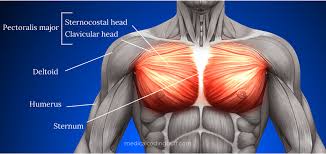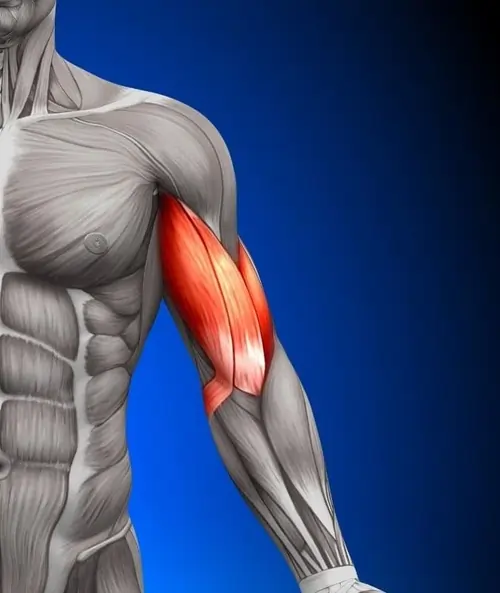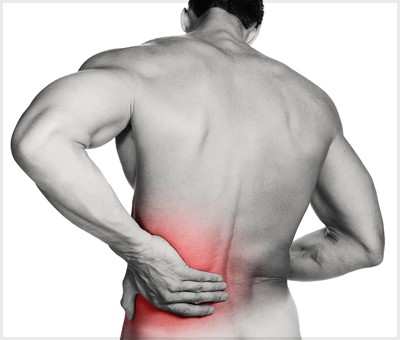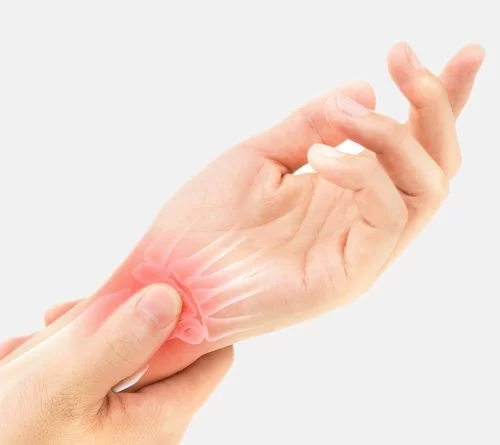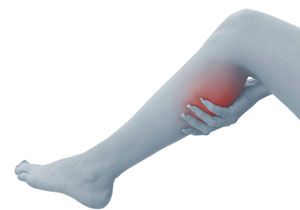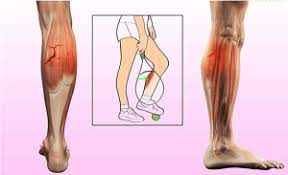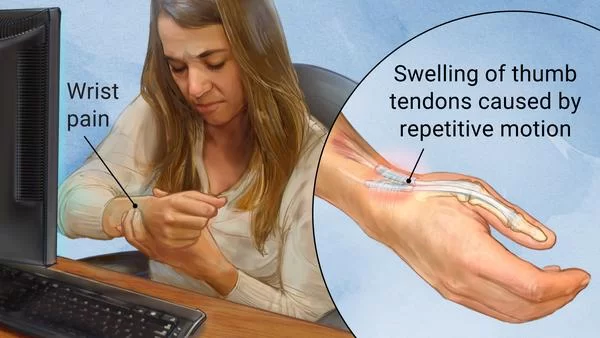Pectoral muscle pain: Cause, Symptoms, Diagnosis, Treatment, Exercise
When you feel the pain in the chest, some movement of the shoulder & scapula is indicated to be Pectoral muscle pain.
you also feel the limiting arm movements & reducing function.
Table of Contents
What is Pectoral muscle pain?
- The pectorals are four muscles that are located paired on either side of the chest.
- This muscle pain occurs due to several causes of injury in the pectoral muscle & also due to occur strain in the muscle pain.
- This muscle pain must be necessary to differentiate from the other cause of the chest pain.
- The patient feels the limiting arm movements & reducing the function of the arm.
- Some condition of this muscle pain is released by rest & ice pack but some require complex surgery.
- This muscle pain is also released by physiotherapy treatment & pain medication.
What is the anatomy of the pectoral muscles?
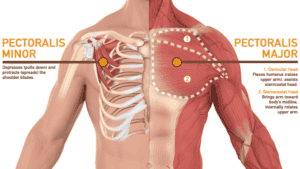
- In the human body, There are two pectoral muscles in each pair.
- The larger muscle is called the pectoralis major & The smaller muscle is called the pectoralis minor.
- These muscles lie on the front of the chest.
- The pectoralis major:
- muscle is much larger.
- this muscle is originates at the clavicle = collar bone & the sternum = breast bone & ribs.
- which is attached to the humerus bone.
- This muscle is help in several movements of the shoulder.
- The pectoralis minor:
- this muscle is a smaller muscle that is located under the pectoralis major.
- this muscle originates from the ribs & also attaches to the scapula = shoulder bone.
- this muscle stabilizes the scapula during the movements of the arm.
What are the causes of Pectoral muscle pain?
- This pectoral muscle pain is caused by injury, usually due to weight exercises.
- The bench press most often occurs to injury of this muscle.
- A severe injury of this muscle is lead the pectoralis muscle to tear.
- This pectoralis muscle tear occurs to loose from the collar bone & ribs on the attachment of the arm.
- This Tear may be partial/complete & sometimes it becomes too intensely painful.
- Sometimes occur to sprain in the muscle.
- Complete rupture also occurs.
- When they occur A direct injury in the muscle which is also pectoral muscle pain.
- When the patient Falls onto the chest & heavy objects are falling on the chest contact is done the muscle injury.
- Some sports such as rugby & American football also injure the pectoralis muscles & produce the pain.
- The pectoralis minor is not injured by direct injury because this muscle is located deep under the pectoralis major so that this muscle is injured by overuse.
- This pectoralis minor muscle is injured when the patient is participate in weight training, swimming, rugby & bodybuilding.
What are the symptoms of the Pectoral muscle injury?
- The patient feels the pain at the attachment of the muscle to the humerus bone & at the front of the armpit.
- The pain of the pectoralis minor is usually sub-acute & onset of pain is gradual.
- In the area of pain present tenderness & trigger points of the pain.
- Swellings & spasms are also present in the area of pain.
- Sometimes inflammation also occurs in the area of pain
- Patients feel the Difficulty in breathing
- Weakness in the shoulder movement.
- Sometimes the patient present with visible bruising.
- When the occur to Touch & pressing the area which increases the pain.
Which condition needs to contact the doctor?
- When you feel any symptoms of this muscle pain along with the chest pain, you must need to contact the doctor & go to the hospital immediately.
- The doctor is taken to first the assessment of this muscle pain.
- In the assessment doctor first, take to history & ask some question about the muscle pain & try to know about the cause of the muscle pain.
- Then doctor observes the swelling/redness & bruising in the area of pain.
- Tn the palpation, part palpates to swelling & spasms of the pain area.
- The doctor examines the ROM & strength of the shoulder movement.
- The doctor is also suggesting to ultrasound & magnetic resonance imaging (MRI) scan which is help to diagnose the pectoral muscle tears.
- After the proper assessment, the doctor advises on the treatment of the muscle pain.
What is the treatment for pectoral muscle pain?
RICE principle:
In the starting phase of muscle, the pain doctor advises to RICE principle to reduce the muscle pain.
- R – rest = Patient is do the rest after the muscle pain, in the rest you used to sling for the rest of the muscle.
- I – ice = You can also apply ice on the area of pain to release the muscle pain, you can also use ice packs & frozen peas on the area of pain to release the swelling & pain.
- C – compression = You can also apply to compression bandage to release the swelling & spasms.
- E – elevation = You elevate the affected arm with the help of a pillow to reduce the swellings.
Pain medication :
- You are used to Non-steroidal anti-inflammatory drugs mainly NSAIDs like ibuprofen & aspirin for the release the muscle pain.
- The dosage of the drug depends on the severity of the pain & depends on the doctor’s advice.
- You can also apply volini gel & dioflance gel to the area of pain to release the pain
Treatment of the strain of the pectoralis major muscle:
- Strains & partial tear of the pectoralis major muscle are managed by conservative treatment.
- The health care provider has put the affected arm in a sling for to rest of the muscle during conservative treatment.
- In the strain area also applied Ice packs & pain medicines which is help to ease the discomfort.
- This injury is take to 4-6 weeks the healing muscle.
- Normally in athletes & others who are participating in the competitive sport for that surgical treatment is a better option to restore the best possible function.
Treatment of the injury of the pectoralis minor muscle:
- The health care provider is also prescribed to reduce whatever activity which is triggered the pectoralis minor strains combined with rest & pain medicines.
- If the pain is more severe, the doctor injects a mixture of a local anaesthetic & a corticosteroid into the pectoralis minor tendon.
- The health care provider also uses ultrasound for precise placement of the injection.
What is physiotherapy treatment for pectoral muscle pain?
The physiotherapy treatment includes electrotherapy, stretching & exercise which are used to reduce muscle pain.
Electrotherapy for pectoral muscle pain:
- The electrotherapy treatment include ultrasound therapy, SWD, TENS & Interferential therapy (IFT) machine which are used for pain relief & swelling of the area of pain.
- On the trigger points & tender points apply to ultrasound for release to pain & swellings.
- On the area of pain apply SWD, TENS & IFT machine to reduce the pain & swelling or spasms.
Stretching for pectoral muscle pain:
- Doorway Pectoral Stretch
- Camel Pose
- Floor Angels
- Behind-the-back Elbow-to-elbow Grip
- Above-the-head Chest Stretch
- Bent-arm Wall Stretch
- Extended Child’s Pose on Fingertips
- Side-Lying Parallel Arm Chest Stretch
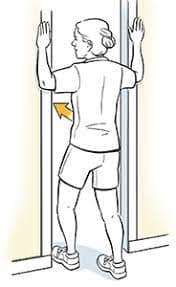
Doorway Pectoral Stretch:
- The patient is Standing in an open doorway.
- Then Raise each arm to the side, bent at 90-degree angles with the palms forward.
- Rest the palms on the door frame.
- Then Slowly step forward with one foot.
- The patient feels stretch in the shoulder joint & chest.
- Must be careful to Stand upright & don’t lean forward.
- Hold this stretching position for 30 seconds.
- Step back & relax.
- Repeat this stretching 3 times in 1 session & 3 sessions per day.
Camel Pose:
- The patient is in a kneeling position on the floor with the knees being hip-width apart & hands on the waist.
- Tuck the toes & place them flat against the floor.
- Then Slowly reach back & place one hand on each heel.
- Keep the chest lifted, shoulders back & down, engage the core slowly push the hips forward.
- Hold this stretching position for 15-20 seconds & repeat this stretching 3 times per day.
Floor Angels:
- The patient is lying flat on the back with the feet hip-width apart & flat on the floor.
- Position both arms to the side at a 90-degree angle with palms facing upwards toward the ceiling.
- Keeping in contact with the floor at all times then slowly bring arms up over the head till fully extended.
- Slowly bring both arms back to the 90 degrees starting position.
- Repeat this stretching exercise 10 times for 3 sets.
- Must be Remember for this stretching to keep the back flat against the floor & ribs tucked at all times.
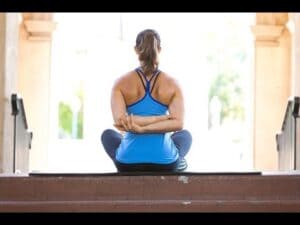
Behind-the-back Elbow-to-elbow Grip:
- The patient is in a Sitting & standing position beginning with the arms hanging by our sides & shoulders pressed down away from the ears.
- Then Gently squeeze the shoulder blades together & broaden the chest.
- Bring the arms behind the back & grip elbow to elbow.
Above-the-head Chest Stretch:

- The patient is in a sitting or standing position, interlock the fingers, then bend the elbow joint & raise the arms above the head.
- Then Gently squeeze the shoulder joint blades together & move the elbow joint &hands backward.
- Vary the height of the hands to emphasize the shoulder joint & chest means hands are behind the head, hands are on top of the head, and he hand is also a few inches above the head.
Bent-arm Wall Stretch:
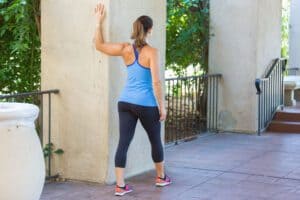
- The patient assumes a split stance, Right leg is in the front & left leg in the back, in a doorway & at the end of a wall.
- Then Bring the left arm up to shoulder height & position the palm & inside of the arm on the wall surface or doorway.
- The patient’s arm looks like a goalpost.
- Then Gently press the chest through the open space to feel the stretch.
- Moving the arm higher & lower which is allow to you stretch the various sections of the chest.
- Then Repeat this exercise on the other side.
Extended Child’s Pose on Fingertips:
- The patient is Kneeling on the floor.
- Try to Touch the big toes together & the patient is sitting on the heels.
- Next, separate the knee joint about as wide as the hip joint.
- Then Bend them forward from the hip joint & walk the hands out as far in front of them as possible.
- With the arms extended palms are facing down then come up onto the fingertips as if the ballis underneath the palms & melts the chest toward the floor.
Side-Lying Parallel Arm Chest Stretch:
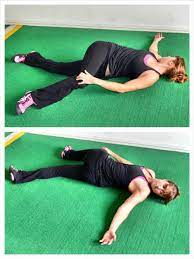
- The patient is lying prone on the stomach then bring both arms out to the sides palms facing down & to create the letter, T.
- Then Start to roll onto the right side by pushing with the left hand.
- Lift the left leg, bend the knee joint & place the left foot behind you on the floor for stability.
- Then Rest the right temple on the floor.
- Must be Keep the left hand is on the floor for the balance.
- For the feel of the extra stretch, lift the left hand toward the ceiling.
- Then Repeat this stretching on the other side.
Exercise for the pectoral muscle pain:
- Incline push up
- Flat bench press
- Incline bench press
- Decline bench press
- Push-up
- Cable crossover
- Chest dip
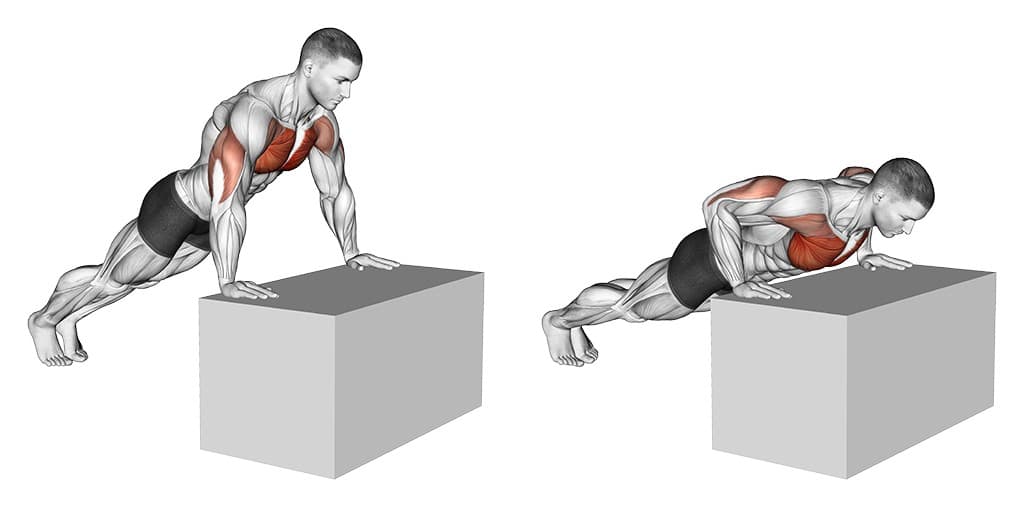
Incline push-up:
- This exercise starts with the hands on the wall & a countertop of the height surface.
- Then Walk the feet back so that the body makes roughly a 45-degree angle with the floor.
- Keep the body straight & spine neutral & lower the chest to the surface leaning against it.
- Pause for a moment, and after that return to the starting position.
- This resistance must be light enough & do the complete up to 20 repetitions.
- For easy exercise, step closer to the hands
- To make the harder exercise, step farther away.
Flat bench press:
- Lie on the back on the bench with the knees bent & feet flat on the floor.
- Grasp the barbell, with the thumb, wrapped around the barbell & palms facing toward the feet.
- Press the arms straight toward the ceiling which lifts the weight off the rack.
- Then Move the weight over chest level.
- Bending the elbow joint down at a 45-degree angle slowly lowers the weight of the chest.
- Must be Kept the bar is approximately in line with the nipples.
- Then Pause for a moment after that press the weight back into the starting position.
- Do the Complete 3 sets of the 8–12 repetitions.
Incline bench press:
- The patient is lying on the back on the incline bench with the knees bent & feet flat on the floor.
- The patient is Grasping the barbell, with the thumb which is wrapped around the barbell & palms facing toward the feet.
- Press the arms straight toward the ceiling to lift the weight off the rack.
- Position the weight above the collarbone.
- Then Slowly lower the weight down to the chest, approximately in line with the mid-chest to just above the nipples.
- Then Pause for a moment after that press the weight back into the starting position.
- Do the Complete 3 sets of the 8–12 repetitions.
Decline bench press:
- The patient is Lying on the back on the decline bench, with the knees joint bent & ankles which is secured behind the ankle rests.
- The patient is holding a barbell, with the thumb wrapped around the barbell & palms facing toward the feet.
- Press the arms straight to lift the weight off the rack.
- Position of the weight above the lower chest to the upper abdomen region.
- Then Slowly bend the elbow joint to lower the weight down to the chest, approximately in line with the nipples.
- Then Pause for a moment after that press the weight back into the starting position.
- Do the Complete 3 sets of the 8–12 repetitions.
Push-up:
- The patient begins on the hands & knees and steps back into a high plank position.
- The hands must be just wider than the shoulders & the legs should be straight with the quads.
- The hamstring muscle is engaged & must be kept the spine neutral.
- Keep the core muscle tight & bend the elbow joint at a 45-degree angle to lower the chest toward the floor,
- Maintaining a straight line from head to heel.
- Press the chest away from the ground till the elbow joints are straight.
- Then Repeat & complete 8–12 repetitions.
- Do the 3 sets of exercises.
Cable crossover:
- This exercise starts with the standing position away from a set of high pulley cable machines & resistance bands anchored overhead.
- Select light to moderate weight which adds to the challenge but gives the success.
- Grasp the hands (or the ends of the band) as they step forward with 1 foot.
- Keep enough tension & control on the handles to keep them in front of the chest.
- Contract the chest muscles & bring the handles down forward across the body at roughly belly button level.
- The hands are crossed to add emphasis to the serratus anterior muscles.
- Hold for a moment & then slowly return to the start.
- Then repeat to another side.
- Do 3 sets of 8–12 repetitions.
Chest dip:
- The patient is in the Standing position which is facing the two parallel bars and grasps them, palms facing in.
- Then Straighten the elbow joint & press into the hands, lifting the body so that it is in line with the hands.
- Then, bend the elbow joint & lower the chest toward the hands.
- Pause, then press back into the starting position.
- Repeat Do the 3 sets of the 8–12 repetitions.

